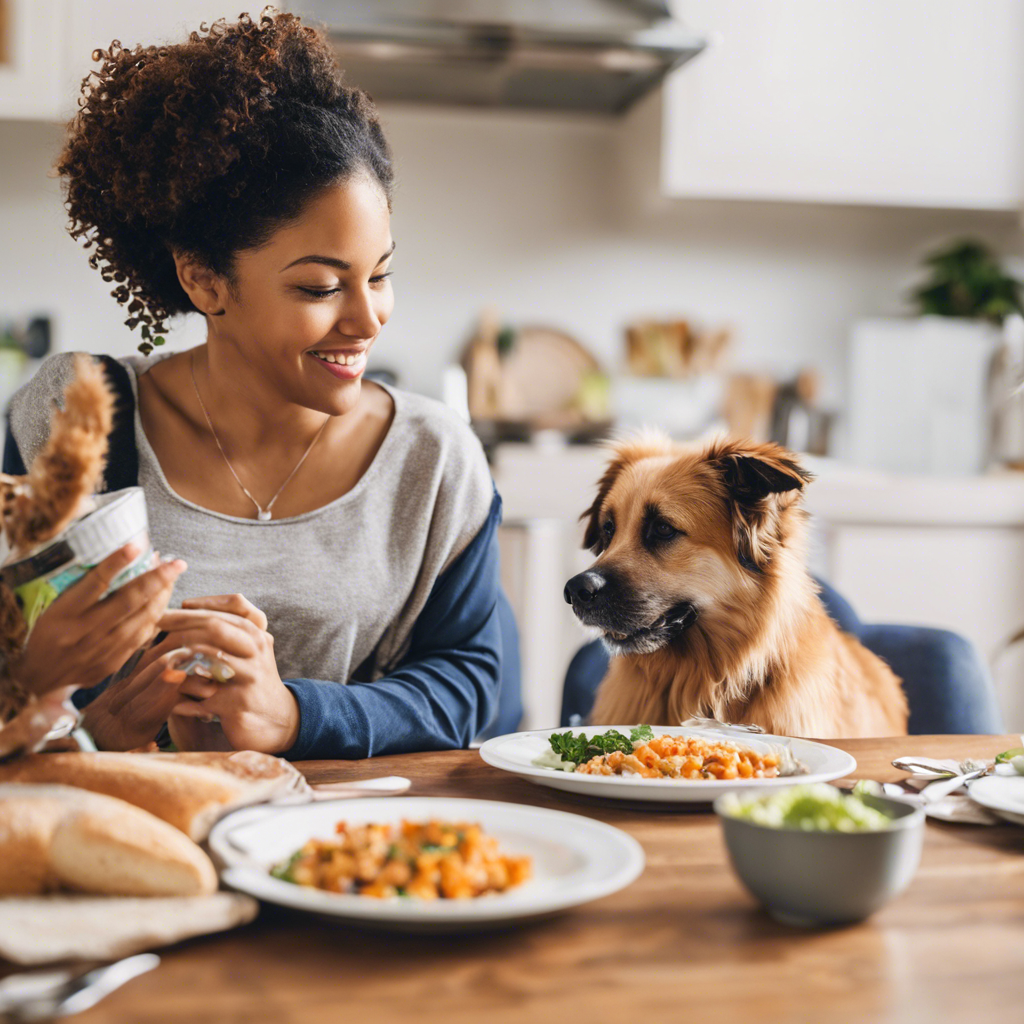Discover how having a pet influences family bonding during mealtimes.
Mealtimes are an integral part of family life, where members come together to share not only food but also quality time and conversation. However, when pets become part of the family, these routines can undergo some delightful and sometimes challenging changes. This article explores the various ways in which pet ownership can impact family mealtime routines, from fostering deeper connections to introducing new responsibilities and considerations. By understanding these effects, families can better navigate the joys and challenges of sharing their dining experience with furry friends.
The Joys of Pet-Inclusive Mealtimes
Having pets join the family for meals can be a delightful experience, adding a unique dynamic to mealtime routines. Here’s how it can enhance family bonding and overall dining experience.
Enhanced Family Bonding
Including pets in family mealtimes can foster a stronger sense of unity and belonging. As pets become integral parts of the family, sharing meals together can deepen emotional connections and create cherished memories. Research suggests that the presence of pets during meals can encourage positive interactions among family members, promoting empathy and strengthening family bonds. A study published in the Journal of Clinical Psychology in Medical Settings highlights the positive impact of pets on family functioning and the potential for shared meals to further enhance these relationships.
Teaching Valuable Lessons
Mealtimes with pets can also be educational for children and adults alike. Pets can teach valuable lessons in responsibility, such as setting boundaries and practicing patience. For instance, children may learn the importance of not disturbing the pet while it’s eating or understanding that sharing food from the table is not always appropriate. By integrating pets into the mealtime routine, families can naturally impart these lessons and reinforce positive behaviors.
Encouraging Healthy Eating Habits
Pets can also influence family eating habits in positive ways. When pets join the family meal, it can encourage healthier choices and portion control. For example, family members may be more inclined to choose pet-friendly foods or opt for healthier alternatives to include their furry friends. This shared experience can promote mindful eating and a deeper awareness of the connection between food choices and overall health.
Challenges and Adaptations
While having pets at the dinner table can bring many benefits, it also presents certain challenges that families may encounter during mealtimes.
Managing Mealtime Distractions
Pets, especially those that are young or highly energetic, may struggle with boundaries during mealtimes. They might beg for food, jump on the table, or demand attention, potentially disrupting the family’s dining experience. Families can address this by setting clear rules and boundaries for pets during meals, such as designated feeding areas and consistent training. Positive reinforcement and patience are key to teaching pets mealtime manners, ensuring that everyone can enjoy their meals without distractions.
Tips for Distraction-Free Mealtimes
- Designate a pet-friendly area for mealtimes, ensuring it’s comfortable and safe.
- Establish a consistent routine for feeding your pet during family meals.
- Use positive reinforcement to encourage good behavior during mealtimes.
- Provide engaging pet toys or treats to keep them occupied and content.
Adjusting Diet and Portion Control
Including pets in family meals may require adjustments to the family’s diet and portion sizes. Some foods that are safe and nutritious for humans can be harmful or toxic to pets. Families need to be mindful of ingredients and ensure that they are pet-friendly. Additionally, managing portion sizes for both family members and pets can be a challenge, especially when pets are prone to begging. Educating family members about appropriate portions for pets and creating a structured feeding schedule can help navigate these challenges.
FAQ
How can I involve my pet in family mealtimes without disrupting our routine?
Start by establishing clear rules and boundaries for your pet during mealtimes. Train them to understand that begging or jumping on the table is not acceptable behavior. Create a designated feeding area for your pet, away from the family dining table, and ensure it’s a comfortable and safe space. Gradually introduce your pet to this area during mealtimes, using positive reinforcement to encourage their presence and good behavior.
Are there any health risks associated with having pets at the dinner table?
While sharing meals with pets can be a delightful experience, it’s essential to be aware of potential health risks. Some human foods can be harmful or even toxic to pets, such as chocolate, grapes, and certain types of nuts. Always ensure that the food you share with your pet is safe and suitable for their consumption. Additionally, practicing good hygiene, like washing hands after petting them and before handling food, is crucial to prevent the spread of bacteria and germs.
What are some tips for managing mealtime distractions caused by pets?
Managing mealtime distractions caused by pets requires patience and consistency. Set clear boundaries for your pet and provide engaging alternatives, such as pet toys or treats, to keep them occupied. Positive reinforcement is key to teaching your pet good mealtime manners. Additionally, establish a consistent routine for feeding your pet during family meals, ensuring they receive their own nutritious meal to prevent begging and distractions.
Conclusion
Pet ownership undoubtedly influences family mealtime routines in numerous ways. While pets can enhance family bonding and create a more inclusive dining experience, they also introduce new responsibilities and considerations. By understanding the potential joys and challenges, families can effectively adapt their mealtime routines to accommodate their furry friends. Whether it’s setting boundaries, adjusting diets, or managing distractions, these adaptations contribute to a harmonious and enjoyable dining experience for both the family and their beloved pets.
—
– Therapy Pets Could Improve Family’s Mental Health
– The Impact of Companion Animals on Family Functioning: An Empirical Study
– The Many Benefits of Having Pets
